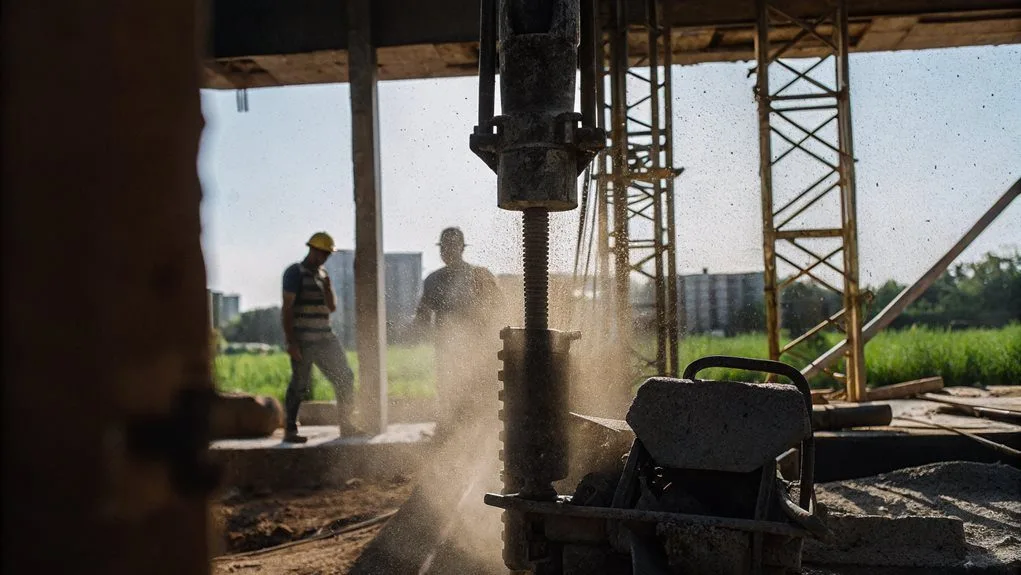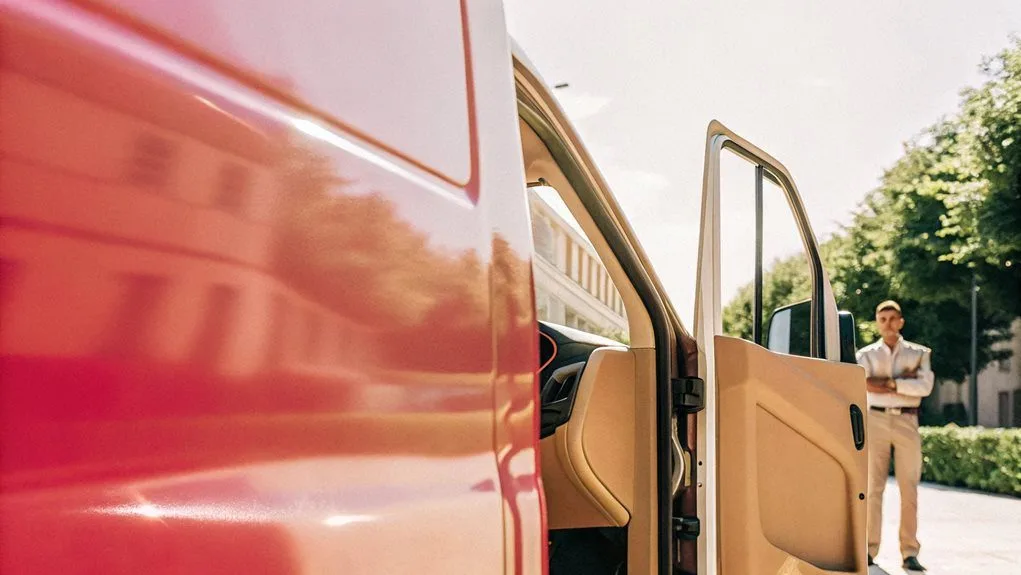Before hitting the road with a tanker lorry, thorough safety checks are absolutely essential. You must examine the structural integrity carefully, looking for any cracks, dents, or signs of wear that could compromise the vessel’s safety. All compliance documents and delivery notes need to be properly checked and verified, ensuring everything is in order for transport. Pressure tests are crucial to identify any potential leaks that could pose serious hazards during transit.
The mechanical components require equally rigorous inspection before departure. Check the brakes thoroughly to ensure they’re functioning properly, examine the steering system for any issues, and inspect the tyres for adequate tread depth and correct pressure. These fundamental safety checks help prevent dangerous roadside breakdowns and ensure the safe transport of potentially hazardous materials. Proper pre-journey inspections are not just recommended practice—they’re essential for protecting both the driver and other road users.
Key Takeaways
- Inspect the tanker body for any dents, cracks, or corrosion to ensure structural integrity.
- Conduct pressure and leakage tests on the cargo tank to verify it can hold prescribed test pressure without leaks.
- Check all safety equipment, including fire extinguishers and emergency valves, to ensure they are in proper working order.
- Ensure mechanical components like brakes, steering, suspension, and tyres are functioning properly for safe operation.
- Maintain proper transport documents and delivery notes to comply with regulatory standards and for accountability.
Regulatory Compliance and Documentation
Let’s talk about regulatory compliance and documentation for tanker lorries. You know, all that fun stuff that keeps your job less exciting and more… well, legal.
First off, let’s make sure you understand the South African National Road Traffic Regulations and the National Regulator for Compulsory Specifications (NRCS).
They’re the folks enforcing safety rules like it’s a game show—you just gotta get the right answers.
You’ll need proper transport documents, complete with hazard markings, because who doesn’t want a giant placard screaming “Hazardous Materials” on their lorry?
And don’t forget those delivery notes. You wouldn’t want your cargo just wandering off, would you?
Finally, keep those records tidy. Think of them as your safety net—because in this line of work, you definitely want one, right?
Structural Integrity Checks
How often do you think about the structural integrity of your tanker lorry? Probably not enough, eh? You’ve got to inspect that body for dents or cracks; a little corrosion can turn your lorry into a rusty Swiss cheese.
When was the last time you documented those unsightly spots for maintenance? Right, let’s not kid ourselves; you should use those handy tools to peek into hard-to-reach areas too.
When did you last note those maintenance eyesores? Grab your tools and give those hidden spots some attention!
Next, check the chassis—because nothing screams “fun” like a collapsing lorry, right? Don’t forget those welds; loose connections are like trust issues in relationships. Regular inspections help to ensure safety and compliance and can prevent costly accidents down the line, especially when considering the importance of tank truck inspections.
Combine all this with verifying the load capacity, and it’s a real party. Just keep your safety records tight—because who doesn’t love a good audit from the Department of Transport?
Pressure and Leakage Tests
Pressure tests aren’t just some bureaucratic checkbox to tick off; they’re your lorry’s way of telling you it’s ready for action—or not.
Seriously, do you really want to drive with a tank that might spring a leak?
The cargo tank needs to hold its prescribed test pressure for at least ten minutes, whilst you play detective for any leaks. It’s essential to conduct an internal pressure test to assess the tank’s integrity thoroughly.
If you’re lucky, you’ll be using water, since it makes spotting issues easier.
Remember to first clear out adjacent tanks; they can be a bit needy in terms of pressure.
You must keep your venting devices in check, or else they’ll throw a tantrum.
That’s right—two consecutive pass tests and you’re sorted. Each tank must be evaluated using acceptable results from § 180.411.
Maintain your tank properly, and keep the leaks at bay!
Safety Equipment and Features
Regarding tanker trucks, safety equipment isn’t just a nice-to-have; it’s a must-have.
Safety equipment for tanker trucks is essential—not optional. It’s all about keeping leaks and ruptures at bay!
I mean, who doesn’t want a tank that leaks or ruptures?
First off, those air vents are your best mates. They keep pressure in check. Fuel tank truck regulations require air vents to be in place to prevent tank failures and leaks.
And let’s not forget the emergency valves; they’ll secure your cargo when things go sideways.
You wouldn’t want cargo flying everywhere during a rollover, right?
Fire extinguishers? Yeah, they’re mandatory—fun fact!
Warning devices help others see your truck when you’re parked.
Rollover protection is like a seatbelt for your tank, keeping everything contained.
So, gear up! You don’t just want a tanker; you want a safe one.
Remember, proper training and certification also plays a crucial role in ensuring all operators are well-prepared for handling emergencies.
After all, safety’s the real MVP here!
Mechanical Component Checks
Before you hit the road with your tanker truck, let’s talk about some essential mechanical component checks, shall we? You wouldn’t drive a car with a flat tyre, right? So, make sure your brakes work, your steering isn’t like a wrestling match, and your suspension’s not ready to retire.
Got engine drama? Listen for weird noises; they’re often not a good sign. Check your fuel system for leaks—after all, we don’t need a mini oil spill on the highway.
And please, inspect your tyres; they’re the only thing keeping you from becoming a very expensive paperweight. Remember, catching these issues before they snowball is better than letting your truck develop a personality… one that you definitely don’t want to deal with later! Additionally, ensure you are aware of the vehicle, vessel and load-specific inspection requirements as part of your safety checks before use. Lastly, make sure to keep accurate records of your inspections as part of your Compliance Topic: CSA Scores, Vehicle Inspections & Maintenance.
Conclusion
So, before you hop in that tanker truck like it’s the family minivan, remember: safety checks aren’t just fancy suggestions. They’re vital—like wearing a seatbelt! Make sure everything’s up to snuff, from structural integrity to those pesky pressure tests. Trust me, you don’t want a surprise leak in the middle of a road trip. Stay sharp, check those safety features, and drive safe. Otherwise, you might just turn an average day into a scene from a disaster movie.






